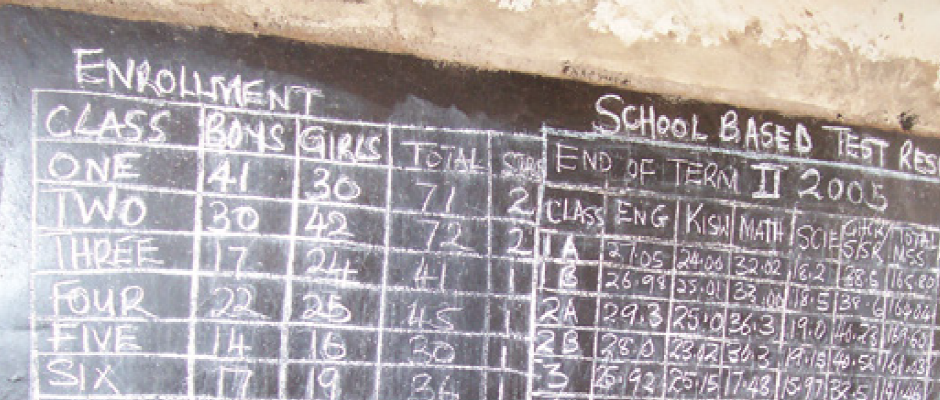
Local governments are well-positioned to play an important role in inclusive governance and sustainable, localized development in countries around the world. Although legislation often assigns important functional responsibilities to subnational governments, it is much less clear whether local governments have the human and financial resources to realize their potential in practice. Consistent data on local finance and public employment data could help clarify the de facto role of local governments in different countries.
Significant gaps remain in local finance and public employment data, especially at the individual municipality and regional levels. This information is crucial for assessing de facto functional assignments as well as the capabilities of municipalities and regions and for evaluating disparities across and within countries. To address these gaps, the OECD and EU have launched a project called “Strengthening Analytical Frameworks and Data on Subnational Government Finance and Public Employment.” A virtual workshop, titled “Enhancing Subnational Government Finance and Public Employment Data for Multi-level Governance Analysis,” was organized to present the results of the project.
During the first session of the workshop, which focused on the “Presentation of the Fiscal and Employment Databases”, a developed database on Regional Government Finance and Investment was introduced. Databases have been created to provide comprehensive data on public finance at both regional and municipal government levels (REGOFI and MUNIFI), as well as a pilot database on subnational public employment with a focus on gender. By delving deeper into the data, the new fiscal databases allow for a more thorough examination and comparison of revenue, expenditure, and debt profiles across regions and municipalities, which can support better policymaking and governance. Municipalities and regions employ a significant portion of the public workforce in the OECD and EU, making it crucial to understand their gender, age distribution, and employment conditions.
Despite this significance, there is limited information available on public employment at subnational government levels, likely due to a lack of quality data. The presentation outlines the creation of fiscal and employment databases, encompassing over 550 regional and state governments and 120,000 municipalities in 37 OECD and EU countries. The project focuses on the expenditure of regions, states, and provinces from 25 countries, highlighting the differences between regions in unitary and federal countries. The pilot database on subnational public employment offers insights into national government staff, women’s representation, and municipal size.
The compilation of data on Regional Government Finance and Investment includes the following databases:
- Aggregated municipal government finance database (Aggregated MUNIFI) provides a selection of indicators on expenditure, revenue, and debt for the entire municipal government sector in OECD and EU countries. It is complemented by disaggregated data, that is data for each municipality in a given country.
- Aggregated regional government finance database (Aggregated REGOFI) provides a selection of indicators on expenditure, revenue, and debt for the entire regional government sector in OECD and EU countries.
- The pilot database on aggregated subnational public employment (Aggregated SUBEMP) provides a selection of indicators on public employment with a gender perspective for subnational administrations in OECD and EU countries. It is complemented by disaggregated data, that is data for individual subnational governments in a given country.
- Disaggregated regional government finance database (Disaggregated REGOFI) provides a selection of indicators on expenditure, revenue, and debt for individual regions in OECD and EU countries.
The workshop’s second session, titled “From Data to Action: Leveraging New Fiscal Databases for Research & Policymaking” focused on the use of fiscal databases for research and policymaking. These databases are valuable tools for developing evidence-based policies, conducting detailed research, and analyzing indicators related to decentralization, fiscal capacities, the financial health of municipalities and regions, and public investment trends. They provide insights into the roles and functions of local governments, particularly in areas such as public investment and the provision of public services. Additionally, they offer valuable information on fiscal equalization mechanisms across different countries, highlighting the distribution of resources and responsibilities among various levels of government. These databases help identify patterns that can inform future policymaking by exploring the connections between public investment and economic performance, especially at the subnational level. City-specific data can offer comparative analyses, addressing questions on how one city measures up against another and how it receives government transfers. This data will be beneficial for studies on local fiscal autonomy and local fiscal health, shaping more informed, sustainable, and equitable fiscal policies in the future.
During the third session, the importance of public employment data and the intersection of subnational finance and employment data were emphasized. The focus was on “Utilizing subnational public employment data for effective policymaking” and enhancing transparency to facilitate international comparison of employment patterns and capacity at all levels of government. The presentation highlighted the alignment of subnational public employment data with the composition survey at the central government level, offering a comprehensive view of the public sector workforce across both central and regional levels. This data is critical for gaining insights into the distribution, roles, and capacities of the public workforce at all levels of government. By providing a more holistic picture, it helps policymakers better understand and address the challenges related to public employment, enabling more informed decisions and targeted policy responses at various levels of governance.
The session presented several examples from different countries and regions that have established fiscal databases. Fiscal equalization databases in Nordic countries have been established to integrate employment and fiscal data, addressing challenges with limited indicators and inconsistent national account classifications. The Subnational Fiscal Information Platform for Latin America and the Caribbean provides comprehensive data on over 17,000 subnational governments, while the Estonian government uses a state finance application for standardized public sector accounting data. The French government’s National Database measures subnational government employment.
At the concluding remarks of the workshop, experts discussed the evolving potential and challenges of regional and subnational employment databases. They emphasized the continuous need for collaboration among policymakers, researchers, and consultants to improve the quality and use of the data. Representatives from OECD highlighted the next steps in the project, including expanding and updating the databases, improving methodologies for international comparisons, and integrating AI technology for predictive analytics.
The OECD and DG Regio of the European Commission have partnered on the project “Strengthening analytical frameworks and data on subnational government finance and Public Employment”.
Access the project’s data and analyses are available for free on OECD’s website: https://www.oecd.org/en/about/projects/strengthening-analytical-frameworks-and-data-on-subnational-government-finance-and-public-employment.html





